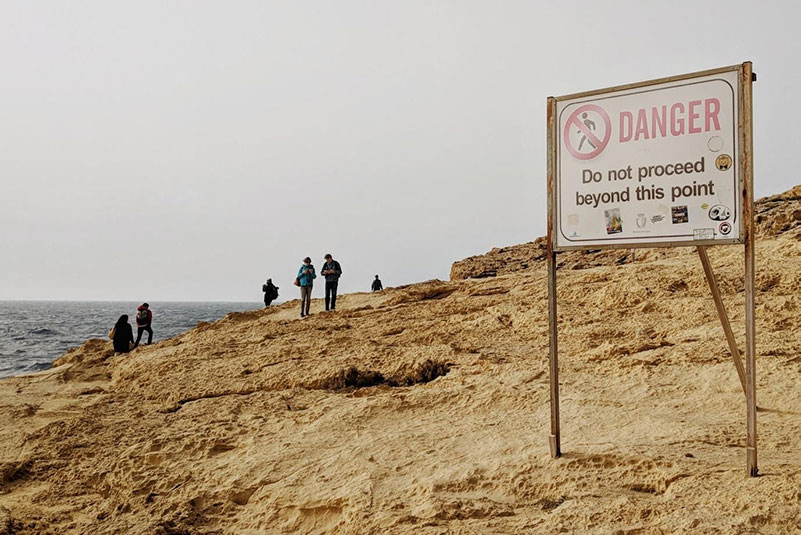Project management is like driving a car during rush hour.
It is not easy, it’s tiring, and sometimes it might drive you nuts, but you still have to keep your focus on.
You must know how to maneuver, when to gain speed and where to drop it, analyse all potential risks and make a decision based on your analysis. In such case, you will get to your destination on time, safe and sound. Otherwise, you might create a potentially dangerous situation on the road that can lead to a car crash that will make you wish you were late.
There’s one significant difference, though: driving rules are written in special books and you have to pass an exam for your license before you get a car on the road. In a case with project management, there is no such book (at least officially) and there‘s a lot to figure out on your own. To save you some time, we decided to make a list of unwritten rules of project management and project manager tips that will help you accomplish your goals and close the deal, so let’s turn on the engine and step on it!
Table of contents:
10 Best Project Management Tips to Boost Your Performance
№1: Make a proper creative brief

The importance of a good creative brief is the very first in the list of effective project management tips and tricks. It has to be very scrupulous and precise and include all the information about the business and project that might be of any use. Sometimes good ideas are born from teeny tiny details that seem very insignificant at first sight, so you should consider literally everything. You never know what will play the defining role and make things work out in the end.
The information you get from your brief will not only be crucial for your ideas, but it also defines what customer wants from you. The brief has to set some specific goals and let you know where your starting point is and what direction you have to move in to achieve the finish line. A creative brief is the beginning of everything. It might help the project go as smoothly as ever, but also can ruin everything from the project workflow to the relations with customers and even between your team members.
We have already discussed how to make a good creative brief in one of our previous blog entries, so make sure you give it read.
№2: Analyse the business situation

The next thing you want to do after you are done with briefing is analysing the marketing situation. Your team’s task is to solve the client’s problem which they cannot solve on their own. It means you must do research to understand what means will lead you to the solution. This will expand the ground that the creative brief gave to you and will narrow down the problem.
What is the client’s market, basically? What are the industry trends – colors, styles? What will make you’re your client’s product more likeable? Who are the competitors? How do they operate? Is there something they lack that you could use? How not to repeat their ideas and make your idea unique and fresh? How aggressive is the competition?
There are many questions you can ask yourself depending on the industry you’re working with, but the essence remains the same. Knowledge is a great power, and if you use it correctly, it will give you the opportunity to get several steps forward.
№3: Map out the whole process

I have never seen a truly well-executed project without a great deal of planning. You might think it is easy, but it actually is a huge and complicated part of your working process. What you have to do is to analyse the given time frames, match them with previous projects that might be related in the same way. For example, you might pick one that had the same project template as you’re going to use this time.
Check how much time it took to accomplish all parts of the workflow, which part was the most problematic, how many iterations you needed, which mistakes you made. Use the past experience to avoid all these issues or at least minimize their effect on overall workflow. If possible, it’s a good idea to finish everything in advance so that you could have some time to extra-check all details.
№4: Assign tasks and organize the workflow

Presuming you’ve dealt with the plan construction, you must assign the tasks to the employees. There are several factors you have to consider:
- Strong and weak spots of your workers.
We all are good at something different. Naturally, you want to give the job to the best people in their spheres, so consider your workers’ skills sets assigning the tasks. It would be weird to make the person who works best with colouring create the logo from scratch. - The workload of each employee.
Think carefully about how much work each person has, especially if your team is working on several projects simultaneously. It’s a bad idea to assign one person to all the most demanding tasks with toughest deadlines only because they’re the best at it. Find balance and compromise, trying to keep the quality at the highest level. - What your team wants.
That’s a tricky one because sometimes we do not get to choose which project to take, a job is a job, no place for sentiments and stuff. However, if you have a choice, it is much better to assign someone who is genuinely curious about the project and wants to give it a try. Once again: do it if you have a choice.
№5: Use special software

Software is an inseparable part of modern project management. We have already talked about mapping out the whole project’s workflow and assigning tasks, and you must know for now that it is much easier to do with specific tools. There are numerous programs that allow you to track the project’s status, the level of task completion, and all deadlines. Cooperation with clients (even international ones) becomes easier as well since there is much less possibility that some feedback is lost on its way to the addressee or someone forgets that they have a task pending.
If you are looking for such a solution to speed up your design approval workflow, you might be interested in Approval Studio. It is a design proofing tool that allows you to check your graphical assets, share them with your client, add annotations, compare versions, and more. No more lost feedback under the pile of emails! You can pull out project reports, too.
№6: Communicate

Organizing constant communication is the most important tips for project managers. Without it, even the boldest and freshest idea is doomed to fail. However well you did your preliminary work, you can easily exclude it from the equation if you cannot convey the information within your team, to the client, and back. Misunderstandings, arguments, haste, and negative working atmosphere are only some of the possible outcomes that can significantly lower the quality of your final product.
Well-established communication patterns help you prevent these problems. One single place where you communicate with your team is a good place to start if you can use it externally to contact your client – it’s even better. We do not recommend emails for internal communication. According to Highnoon, the average open-rate of internal organization emails is not more than 63%, which basically means that a third of all letters go unnoticed. In case there are some important data inside, it can easily get lost. Although emails still remain the main source of communication for most companies, it is far more convenient to store any project-related info or feedback within a special tool as we described above.
№7: Don’t be afraid to clarify

Even when communication patterns are clear enough, no one can deny that the human factor can have a significant influence on the project’s flow. Misinterpreting or even simply forgetting the information that was delivered to us, we can put at risk the success of the whole thing.
Quite often what people decide to do in such cases is “figuring everything out on their own”. Why? Because they are too shy or uncomfortable to ask once more, being afraid of other people thinking they are idiots. In reality, there is nothing wrong with double-checking and clarifying everything just in case. It is more of an attitude matter: I personally think that it is better to ask twice when they are not sure about something. People who do so have a good sense of responsibility and are not willing to mess things up just because they didn’t hear something right. Over years of experience, I started to appreciate that.
№8: Evaluate the risks

Every project is risky. Yes, we can analyse the marketing situation, schedule the whole workflow, assign tasks and deadlines, but one more important part to consider is a risk. Nowadays risk management has become an inseparable part of every company’s workflow and more and more people appreciate it.
Basically, it is asking yourself “what can possibly go wrong?” and applying corrections to your workflow to avoid the issues. The interesting thing is that risk assessment never really stops: you should work on it before the project’s launch and continue monitoring the situation after it. Be ready to interfere any minute if something goes wrong. Remember this advice: it is always better to predict the problem than to deal with its consequences.
№9: Never rush

Following the deadlines and finishing your work on time is the golden rule for you if you want to maintain your company’s reputation at the highest level. However, you should never make too much haste. Trying to become Barry Allen a.k.a The Flash working at a crazy tempo does not really bring many benefits to mere humans, decreases the quality of work, and often is completely unjustified.
The ultimate deadline is set when the project contract is made, and if you suddenly have to submit your work quicker, it will surely come at a cost, and all parties should understand it. If no one minds – that’s totally fine, but I would still advise avoiding rush because it will ruin all your schedule and will cost you some nerve cells.
№10: Base all your decisions on logic

I have often encountered situations when people think their personal opinions are the only right way to do stuff, although marketing and risk analyses say the opposite. Do not make the same mistake, it almost never leads to anything good. Our personal tastes and preferences do not often align with what will be more efficient for the project, so whenever you have to make a decision, remain objective.
All people think differently, and if everyone in the team starts doing what they like instead of what fits better, a seemingly successful project will take a deep dive right into complete chaos. Such an agency will hardly get a recommendation from their client and will soon have to disband if the managers do not change the approach. Thus, logic, statistics, and objectivity should come first; your personal untamed love for mid-18th century Baroque – second.
Final Thoughts
All in all, good projects are something that is born as a result of hard work and precise methodology, not by chance. Project management might seem easy for some, but the reality is very much different from that. Among other tips for project management success, only your determination, detailed analysis, and clear communication will help you develop your ideas into something that everyone will be able to recognize years later. And, as always, we at Approval Studio will be more than happy to help you with that!

 TEAM SOLUTIONS
TEAM SOLUTIONS WORKFLOW SOLUTIONS
WORKFLOW SOLUTIONS



 REVIEW TOOL
REVIEW TOOL PROJECT MANAGEMENT
PROJECT MANAGEMENT TOOLS & INTEGRATIONS
TOOLS & INTEGRATIONS
 CLIENT INTERVIEWS
CLIENT INTERVIEWS









